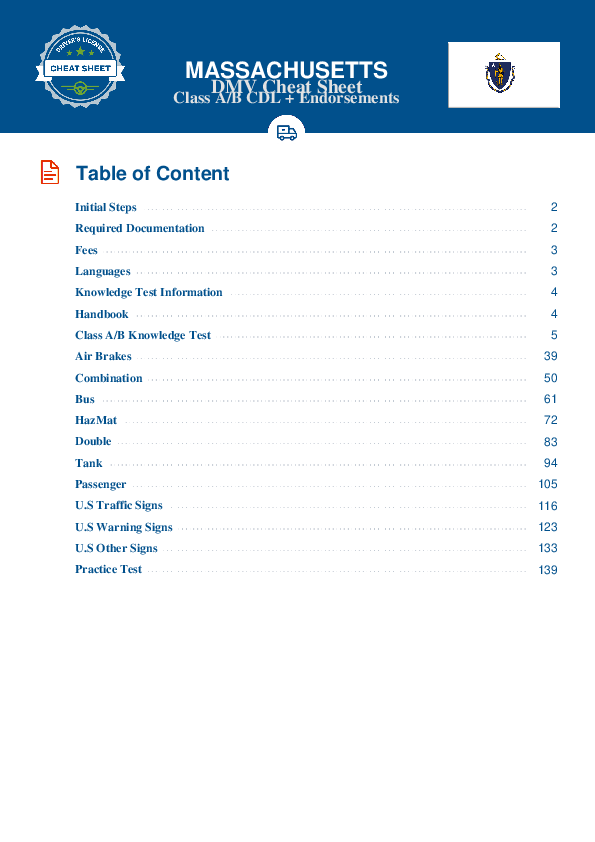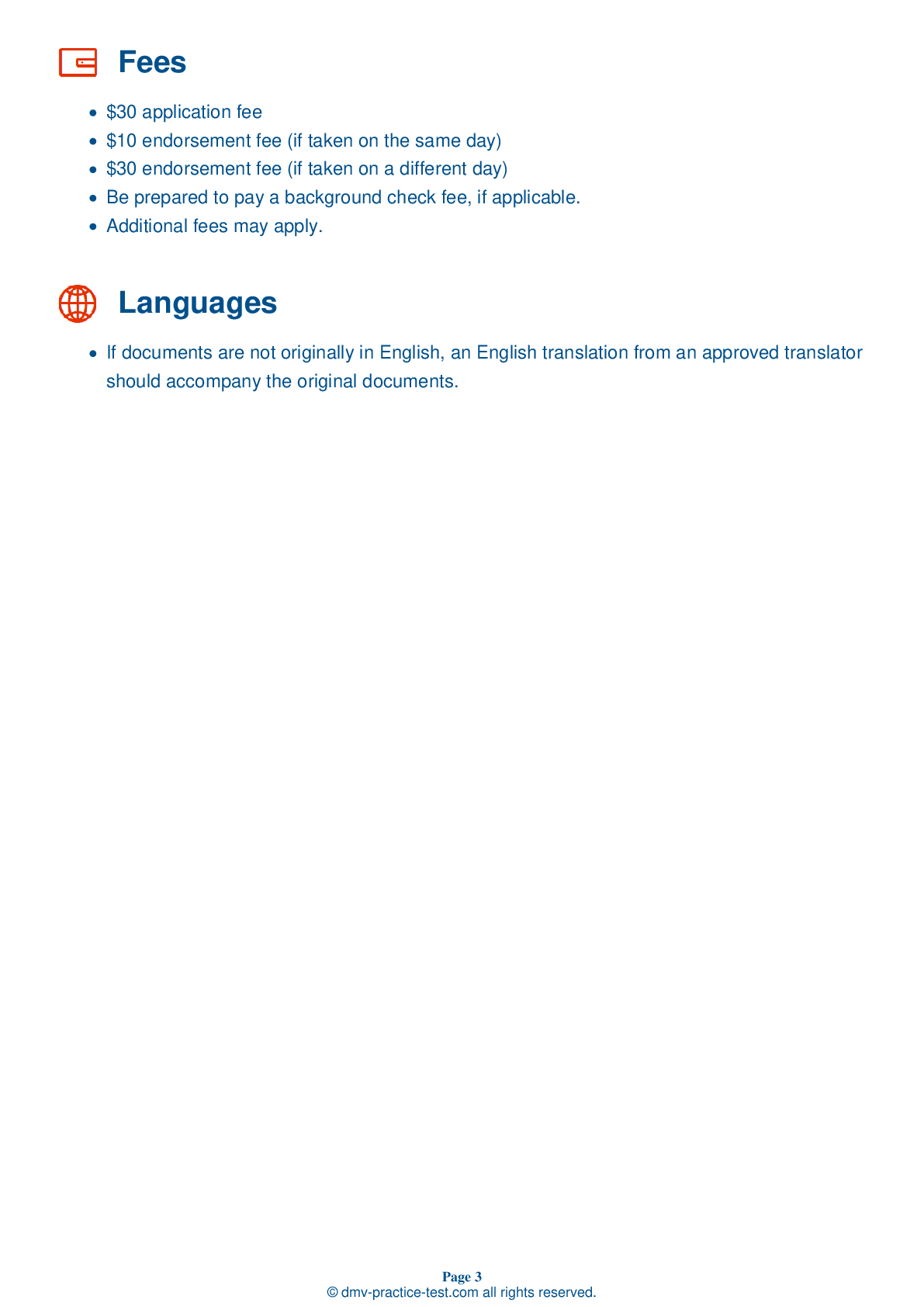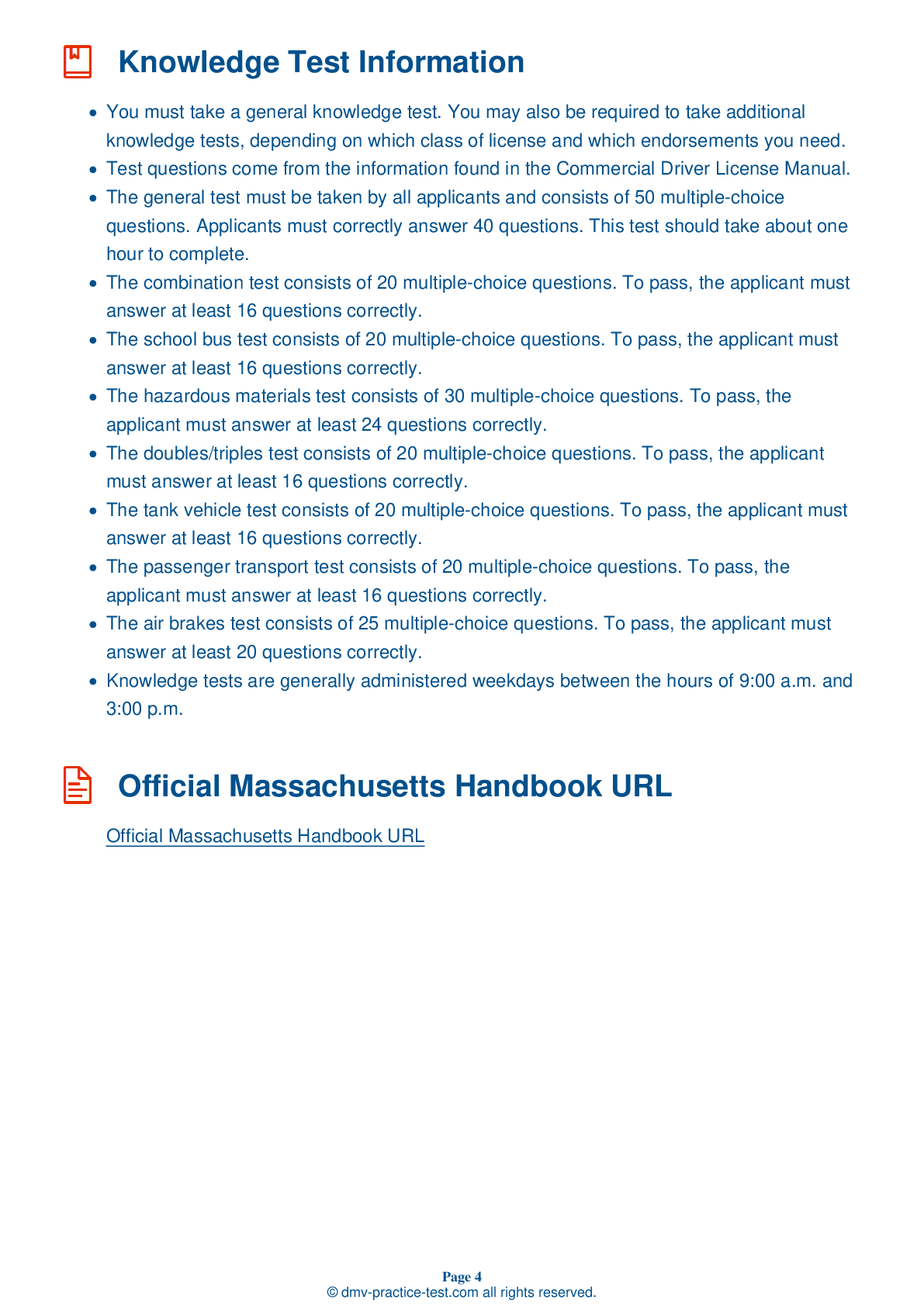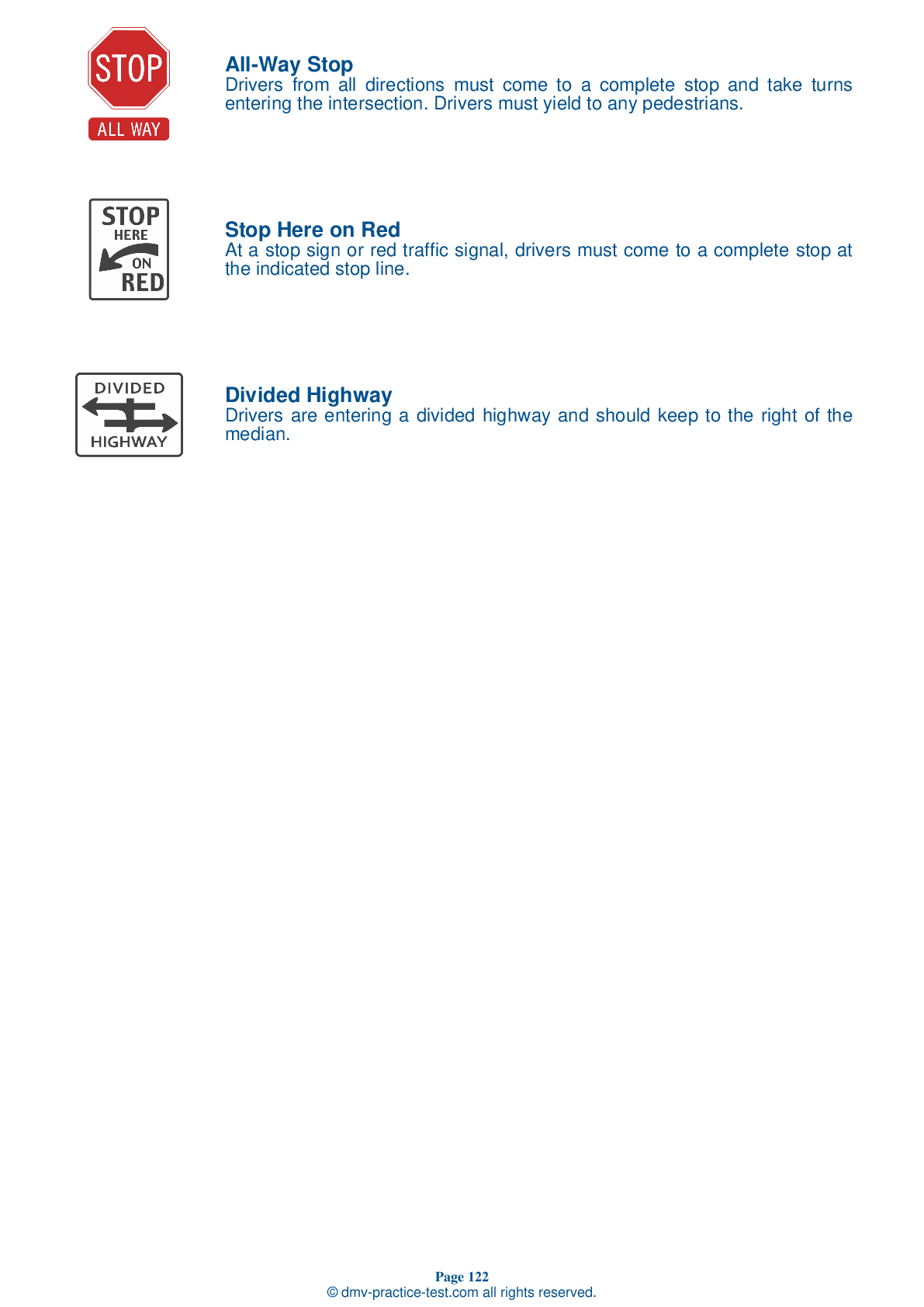Class A Driving Test | Massachusetts 2026 #1 Page 3 of 7
Train for FREE online with our Massachusetts class A license test. The official exam test consists of several obligatory parts, with all of them checking your knowledge of different blocks of road rules. If you need to obtain a MA CDL class A permit in 2026, practice as much as possible. Free sample tests published on our website will help you check and improve your knowledge and boost your grades. Please bear in mind that CDL class A requirements may vary from state to state.
15 . Leaking shock absorbers:
The suspension system keeps a vehicle's axles in place. Damaged suspension parts, such as leaking shock absorbers, may be potentially dangerous defects on a vehicle.
16 . To stop a vehicle using air brakes:
To stop normally in a vehicle with air brakes, press down the brake pedal.
17 . What is Gross Vehicle Weight (GVW)?
Gross Vehicle Weight (GVW) is defined as the total weight of a single vehicle in addition to its load.
18 . Which of the following is not a sign of bad brake drums or shoes?
Potential problems to check for when inspecting brakes include cracked drums; shoes or pads with oil, grease, or brake fluid on them; and shoes that are missing, broken, or worn dangerously thin.
19 . If confronted by an aggressive driver, you should:
If you encounter an aggressive driver, the most important thing to do is get out of their way, if possible. Do not provoke the driver by challenging them or making eye contact, and do not let yourself be provoked by rude gestures they might make.
20 . What happens if you operate a CMV with any detectable amount of alcohol in your system?
If you are found to be driving with any detectable amount of alcohol in your system, but are still below the legal limit of 0.04 percent, you will put out-of-service for a period of 24 hours.
21 . Poisonous fumes can enter the cab due to:
Defects in an exhaust system are very dangerous because they can cause poisonous fumes to enter the cab or sleeper berth.
See the exact questions that will be on the 2026 Massachusetts DMV exam.
99.2% of people who use the cheat sheet pass the FIRST TIME
Lillian MCcranie explains how our CDL study guide was helpful in passing the exam and recommends it to everyone.
Cameron tells us how he purchased the CDL exam, and found it to be a useful tool which helped him pass the exam and find a job.



